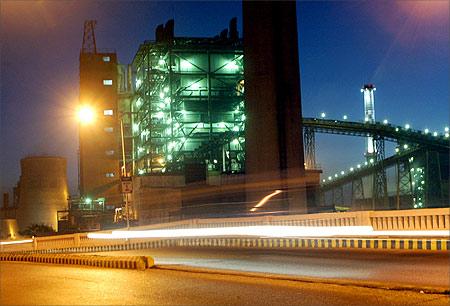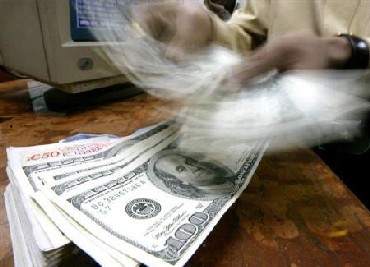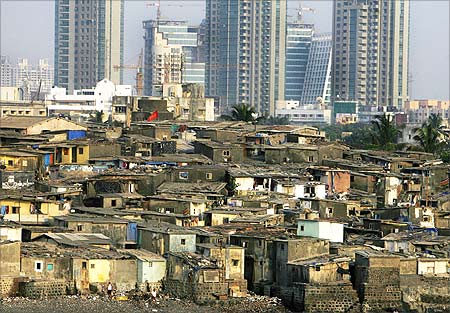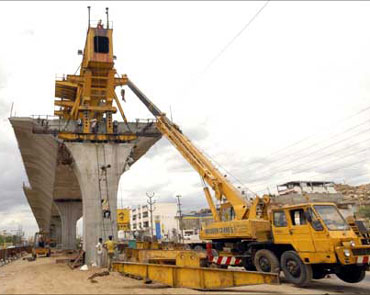 | « Back to article | Print this article |
Needed: $1,000,000,000,000 for India's infrastructure!
India's infrastructure sector will require investment of about $1 trillion in the 12th Five-Year Plan, double the amount envisaged in the ongoing Plan period, a report says.
According to a report -- Real Estate and Construction Professionals in India by 2020 -- by RICS, investment in infrastructure during 2007-12 is $500 billion.
"The expected level of infrastructure investment predicted in the 11th Plan is 2.36 times that of the 10th Plan. Furthermore, this is expected to almost double for the 12th Five-Year Plan," the report said.
The report, which was prepared for Royal Institution of Chartered Surveyors (RICS), also pointed out that about 97 million jobs are likely to be created over the next 10 years across different sectors in the country.
"In 2020, the workforce participation rate will increase to 42 per cent with 585 million working population, implying net increase of 97 million people," it added.
Click NEXT to read on . . .
Needed: $1,000,000,000,000 for India's infrastructure!
Due to this huge increase in jobs, India may need to potentially build an average of 8.7 billion sq ft of real estate space every year, adding up to a whopping 95 billion sq ft between 2010 and 2020, RICS said.
The study, however, said there is a huge shortfall of skilled manpower in the infrastructure sector that needs to be addressed with urgency.
"The country is currently facing massive shortages of skilled workforce in the construction sector. If we do not address this issue, it will be a big deterrent for us," RICS South Asia board chairman Anshuman Magazine said.
As per estimates, only 27,000 civil engineers are added every year against an annual demand of 4.27 million for the next decade. India's total strength of civil engineers is about 5,33,000.
"A sustained period of shortfall in annual supply, coupled with an increasing year-on-year demand, could result in a cumulative demand of nearly 40.2 million civil engineers over 2010-20, with a shortfall of 39.4 million civil engineers over the same period," the report highlighted.
Click NEXT to read on . . .
Needed: $1,000,000,000,000 for India's infrastructure!
Similarly, the country is likely to witness a total shortfall of 3.64 million architects and 1.1 million planners during 2010-20 period.
The survey, however, said the estimated supply of non-core professionals in the built environment sector is nearly three times the supply of core professionals, but they fall short of desired skills.
"A large part of this non-core professionals needs to be trained on the real estate, construction and infrastructure sectors, to convert them into specialised professionals," RICS said.
Slow reforms, lack of funds hurting growth: S&P
The infrastructure development in the country is being hit hard by a slow pace of reforms and limited long-term funding options and this trend can deter the economic growth, rating agency Standard and Poor's has warned.
In a report analysing the key factors hindering the infrastructure growth in the country, S&P has said that the government has stepped up infrastructure spending in recent years, but a slow pace of reforms and a lack of long-term funding options were constraining the sector's growth.
Click NEXT to read on . . .
Needed: $1,000,000,000,000 for India's infrastructure!
"India's inadequate infrastructure is a major roadblock to the country's target of achieving a 9 to 9.5 per cent annual growth in 2012-2017," said the report titled 'Can India's developing infrastructure keep pace with economic growth?'
"An immediate consequence of increasing urbanization in India in recent years has been manifold growth in demand for infrastructure," S&P's credit analyst Rajiv Vishwanathan said, adding that the demand is likely to keep increasing in step with growth in the Indian economy.
In order to keep up the pace of infrastructure development, reforms are necessary to create a robust framework with transparent policies for project execution and funding, S&P said.
"Constraints in securing clearances, land rights, and long-term funding could cause companies to fall short of their targets," Vishwanathan added.
The country's power deficit is fuelling demand for energy projects, while rapid industrialisation and urbanisation are creating an urgent need for efficient road and rail network and other improvements in infrastructure, Vishwanathan added.
Click NEXT to read on . . .
Needed: $1,000,000,000,000 for India's infrastructure!
The Twelfth Five-Year Plan focuses on removing some of these roadblocks and creating a sustainable framework for private-sector participation.
"The fate of the infrastructure sector over the next few years will depend on the ability of India's leaders to execute these plans," the report said.
In August, Prime Minister Manmohan Singh had said that investments on creation of infrastructure have gone up by one-and-a-half times as a percentage of the GDP during the last seven years of the United Progressive Alliance government's rule.
"In the 12th Plan (2012-17), we will further accelerate investment in infrastructure. We will pay special attention to the remote areas of our country and to rural areas. Connecting such areas by rail and road will get the top-most priority," Singh had said.
The Planning Commission envisions doubling the investment in infrastructure sectors to $1 trillion (about Rs 45,00,000 crore) during the 12th Five-Year Plan.




